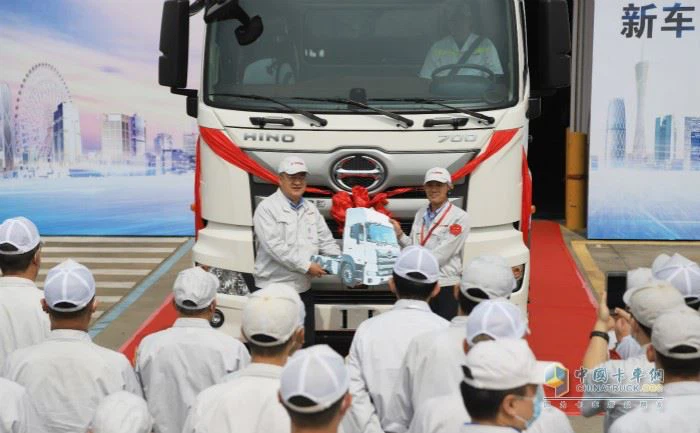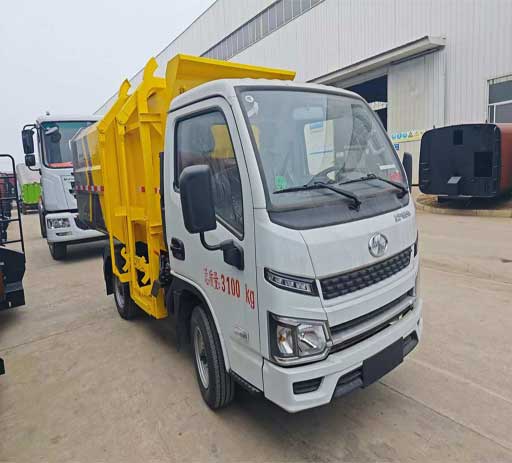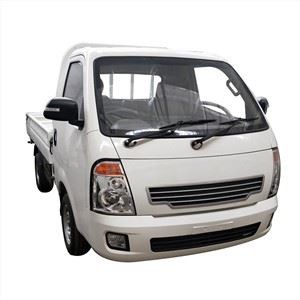Understanding Bank Trucks: The Backbone of Secure Banking Logistics

Introduction
In the bustling world of banking and finance, the term “bank truck” often conjures images of armored vehicles navigating through city streets, safeguarding vast sums of money. The role these trucks play extends beyond merely transporting cash; they are essential for ensuring security, efficiency, and reliability in banking logistics. This article aims to provide an extensive overview of bank trucks, shedding light on their importance, types, operations, and the technologies that enhance their effectiveness. Whether you’re a banking professional or simply curious about the enigmatic world of financial transport, this comprehensive guide is designed to inform and enlighten you.
What is a Bank Truck?
A bank truck, commonly known as an armored truck, is a specially designed vehicle used for the secure transport of cash, valuables, and sensitive financial documents between banks, ATMs, and businesses. These trucks are fortified with reinforced materials, state-of-the-art security features, and advanced tracking technologies, making them an indispensable part of the financial ecosystem.
Key Characteristics of Bank Trucks
- Armored Protection: Bank trucks are constructed with heavy-duty materials, ensuring protection against robbery and other threats.
- Advanced Security Systems: Equipped with GPS tracking, alarm systems, and sometimes even live surveillance systems.
- Specialized Personnel: The staff operating these vehicles usually undergo rigorous training in security and emergency procedures.
The Importance of Bank Trucks in the Financial Sector
Bank trucks play a critical role in maintaining the integrity of financial operations. Here are several key reasons why they are vital:
1. Security
With the ever-present threat of theft and robbery, bank trucks provide a secure means to transport cash and valuables, minimizing the risk of loss for banks and businesses alike.
2. Efficient Cash Management
By facilitating the transportation of cash between banks and ATMs, bank trucks help maintain adequate cash flow, ensuring that ATMs are always stocked and operational for customers.
3. Business Support
Businesses can rely on bank trucks for cash pickups and deliveries, ensuring operational liquidity without compromising on safety.
Types of Bank Trucks
Bank trucks come in various shapes and sizes, tailored to meet specific needs. The most common types include:
1. Light Armored Trucks
These trucks are typically smaller and suitable for short-distance travel. They are often used for local bank branch deliveries and cash pickups from businesses.
2. Heavy Armored Trucks
Designed for high-value transport, heavy armored trucks are equipped with additional armor and enhanced security features. They are used for transporting large sums of cash over longer distances.
3. Cash-in-Transit (CIT) Vehicles
These specially designed vehicles are used by security companies to transport cash from ATMs and businesses to banks. They are highly secured and monitored during their transit.
Technology Enhancements in Bank Trucks
As technology advances, so do the capabilities of bank trucks. Various technologies integrated into these vehicles enhance their functionality and security:
1. GPS Tracking
GPS systems allow for real-time tracking of bank trucks, providing both security and logistical support to monitor the vehicle’s route and status.
2. Surveillance Cameras
Many bank trucks are fitted with internal and external cameras to monitor activities and provide recorded evidence in case of any incidents.
3. Communication Systems
Secure and robust communication systems ensure constant contact between the bank truck and the operations center, allowing for immediate response in emergencies.
How Bank Trucks Operate: A Step-by-Step Process
The operation of a bank truck is a highly coordinated effort involving several steps:
1. Scheduling
Companies schedule regular pickups and deliveries based on cash flow requirements at various bank locations and ATMs.
2. Dispatching
On the scheduled day, armored vehicles are dispatched to the designated locations, equipped with necessary cash and security measurement tools.
3. Pickups and Deliveries
The crew collects cash from businesses or ATMs and makes deposits at banks, all while adhering to security protocols.
4. Monitoring
Throughout the process, the movements of the bank truck are monitored through GPS and communication systems to ensure safety.
Choosing the Right Bank Truck Service
When it comes to selecting a bank truck service, businesses should consider several factors:
1. Reputation and Reliability
Choose a service provider known for its reliability and strong safety record in the industry.
2. Range of Services
Select a provider that offers a comprehensive range of services, including scheduled pickups, emergency responses, and custom solutions based on your needs.

3. Technological Capabilities
Look for services that utilize advanced technologies for tracking and security to enhance safety measures.
Case Studies: Successful Operations of Bank Trucks
1. Case Study: Regional Bank’s Cash Management System
A regional bank implemented a schedule-based delivery system for its ATM network, drastically reducing downtime and improving customer satisfaction. By introducing bank trucks for timely cash deliveries, ATM accessibility increased by 40% within the first quarter.

2. Case Study: Retail Store with High Cash Flow
A large retail store partnered with an armored truck service to facilitate weekly cash pickups and deposits. This arrangement helped to minimize cash on hand, reducing theft risk while ensuring the store always had sufficient capital for operations. Their theft incident reports dropped by 60% within six months.
Frequently Asked Questions
1. What kind of security features do bank trucks have?
Bank trucks typically have armored exteriors, bulletproof glass, GPS tracking, alarm systems, and surveillance cameras to ensure security during transport.
2. Are bank trucks insured?
Yes, bank trucks are usually covered by comprehensive insurance policies designed to protect against theft, damage, or loss during transit.
3. How are bank truck drivers trained?

Bank truck drivers undergo special training that includes safety procedures, handling cash, and emergency response techniques to ensure they are well-prepared for any situation.
4. Can bank trucks transport items other than cash?
Yes, in addition to cash, bank trucks can also transport valuables such as jewelry, important documents, and sensitive materials that require secure handling.
5. How often do bank trucks make pickups?
The frequency of pickups depends on the specific agreement between the service provider and the client, varying from daily, weekly to bi-weekly, based on cash flow needs.
6. What should I look for in a bank truck service provider?
When choosing a bank truck service, look for their reputation, reliability, service range, technological advancements, and any customer testimonials or case studies that indicate successful operations.
